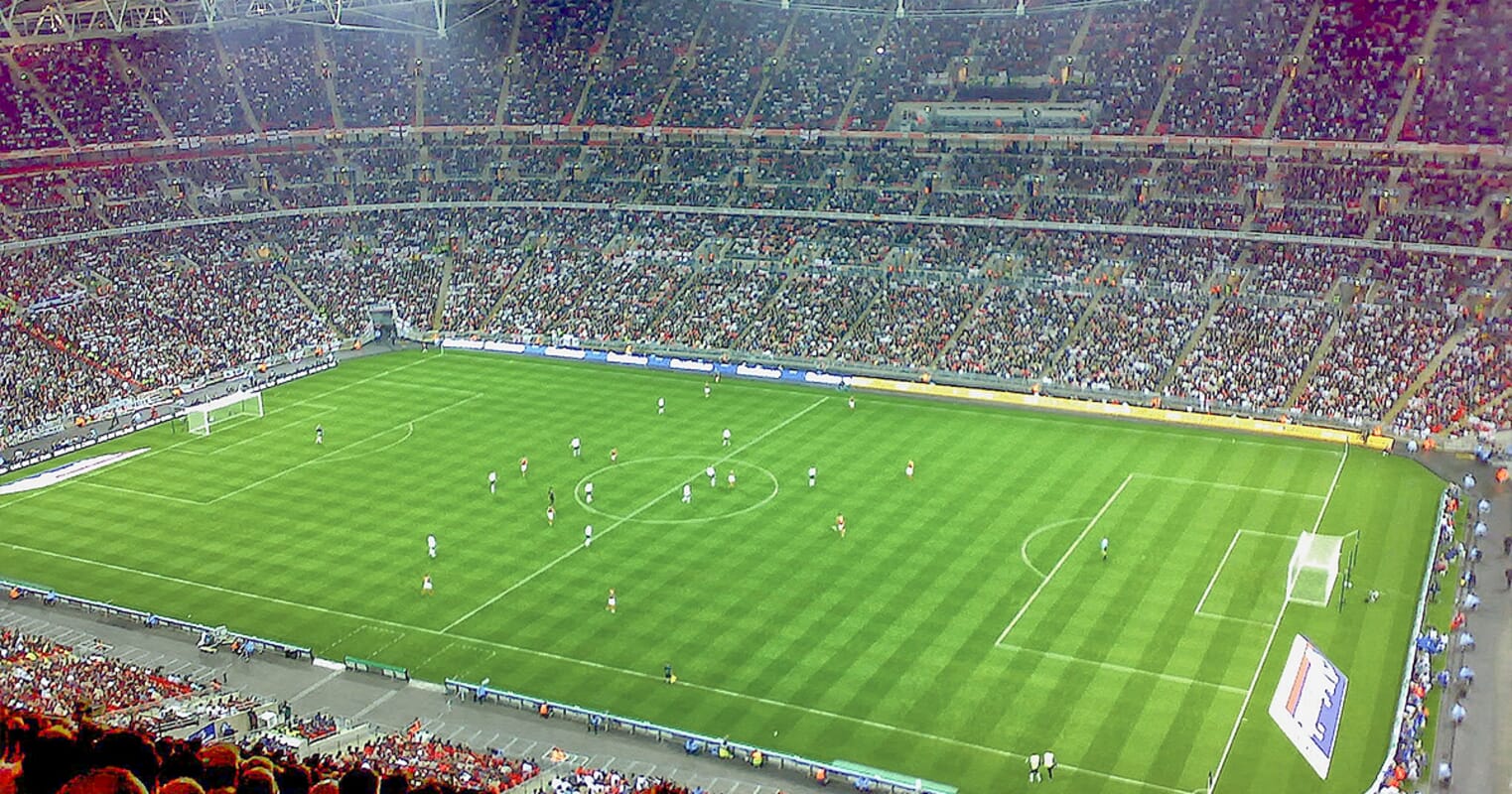In a game that had almost everything, it might seem churlish to begin by pinpointing something that didn’t happen in Chelsea 4-4 Manchester City. But here goes: there wasn’t a single through ball in the entire game.
In an eight-goal thriller between two adventurous, technically proficient sides, not once was there a pass threaded between defenders for an onrushing attacker, according to Opta. By way of comparison, there were 12 through balls in Chelsea’s equally eventful 4-1 win over Tottenham last Monday.
Yesterday’s game was one of 10 Premier League matches this season that hasn’t featured a through ball, the majority of which have involved the Premier League’s less adventurous sides. On the other hand, there has only been one Premier League game this season — West Ham’s 3-1 win at Brighton — that has featured more fast breaks.
That might seem like mere statistical trivia, but it tells you something about the nature of this game — the style, the tempo, the way these sides attacked. Once upon a time, an open fixture between these sides would feature incessant incisive balls in behind from Eden Hazard and Cesc Fabregas, from David Silva and Kevin De Bruyne. But in some ways, the game has moved on.
That’s not to say there was no passing quality on show yesterday. But the passing quality came almost solely from deep. The players who played the most passes were Ruben Dias, Rodri, Axel Disasi, Manuel Akanji, Thiago Silva and Josko Gvardiol, five defenders and a holding midfielder.
But how did these moves unfold? How did Chelsea and Manchester City so frequently get the ball to attacking players in dangerous positions? Here are nine different ways.
1) Playing through the pressure
This is the classic way modern sides face a challenge like this. Rather than getting scared by the opposition press and attempting to bypass it with long balls, teams actively invite the press by playing short, then quickly moving the ball through the lines.
On this occasion, Chelsea beat two City players in different ways: first with Reece James playing a one-two with Thiago Silva to get past Bernardo Silva…
… and then getting to the ball just before Gvardiol and poking it past him.
Chelsea end up with a five-against-four, with Cole Palmer dribbling forward into the box.
2) The second ball
When Pep Guardiola first arrived in English football, the main thing that surprised him was the number of second balls (flick-ons and clearances from crosses or long balls when the ball is still there to be won) his side had to fight for. In December 2016, he dedicated a whole training session to the concept of latching onto second balls before a clash against Arsenal.
With few long balls in this game, there were relatively few of these moments. But at times, they proved crucial. Chelsea’s second goal came when Kyle Walker tried to clear downfield after Chelsea had gone long, and Enzo Fernandez battled to reach the ball first…
He played it to Palmer, who waited for an overlap from James…
… who slid the ball across the six-yard box for Raheem Sterling to turn home in precisely the manner he did so regularly in his time at City.
3) The press
With both sides pressuring their opponents intensely in midfield, one error in possession could have been fatal. Here, Dias plays the ball forward to Phil Foden, Fernandez jumps onto him quickly and nips ahead, playing the ball to Conor Gallagher.
He, in turn, feeds Nicolas Jackson…
… who tries to play a pass between Dias’ legs for Gallagher to run into, but the pass is blocked.
4) The dribble
Immediately after the previous move, Walker stops and assesses the situation. At first, he’s tempted to calm the tempo of the game. But then he spots an opportunity to break, so he changes his mind…
… dribbles past Jackson, and plays the ball onto Bernardo.
He then carries the ball and plays it into Erling Haaland, who drives inside past Thiago Silva, but his shot is too close to the goalkeeper.
5) Goalkeeper distribution
This was a difficult match for the goalkeepers, who were being peppered with shots, and also had to act as reliable distributors from deep. And while Sanchez has made errors this season, and Ederson might be unhappy with his parry for Jackson’s goal in the second half, neither put a foot wrong in possession.
The best goalkeeping pass of the game came shortly before half-time, when Sanchez squeezed the ball into Gallagher…
… who received it on the turn…
… and played it onto Sterling, who drove into the box, and had a decent effort at goal.
6) Throw-ins
City’s third goal came, unusually, from a throw deep inside their own half. But this is arguably the best opportunity to bypass multiple opponents, who are attempting to ‘box in’ the side with the throw.
Gvardiol throws the ball backwards to Bernardo…
… who thumps it forward straight to Haaland, who turns Disasi instantly, and suddenly Chelsea only have two defenders between the ball and the goal.
Haaland plays it out to Foden, who waits for the run of Julian Alvarez, and Haaland turns home at the far post in scruffy fashion.
7) The classic counter
Sometimes, attacks in end-to-end matches like this are considered counter-attacks. But often, they’re not — the team has started with the ball, and simply bypass a press before breaking. That is not a counter-attack, because the opposition weren’t on the attack in the first place.
But there were genuine counter-attacks at Stamford Bridge. Here, when Fernandez plays a sloppy pass, Dias slides in to knock the ball to Foden.
He plays it past Marc Cucurella and onto Haaland…
… who turns and sweeps a long ball out to Jeremy Doku, in acres of space out on the left. He eventually cuts inside and has a decent effort at goal.
8) The trick
One piece of skill in midfield can be so valuable in a heavy-pressing game like this. Here, Akanji plays the ball into Bernardo, who senses Moises Caicedo is coming…
… and lets the ball run past his right foot, controls it with his left foot behind his right leg, then turns smartly past Caicedo and into attack.
He then plays the ball to Rodri, who knocks it out for substitute Jack Grealish, and City are breaking five-on-four.
9) Chaos
In a game where neither side had control, this move summarised it nicely. Disasi storms into a tackle on Foden and the ball pops up into the air.
Five seconds later there’s another big tackle, as Grealish slides in on Gallagher.
Chelsea have won one tackle, City have won one tackle, but the ball falls to Palmer, who has options left and right. He overhits his pass to Jackson, and Akanji intercepts.
At full time, Mauricio Pochettino was seemingly furious with the referee for blowing his whistle when Chelsea were on the attack, but it was a fitting way for the game to end — a player dribbling forward towards the opposition defence.
In some ways, this game felt like an absurd anomaly — a crazy back-and-forth contest where both sides lacked control or defensive solidity. But in reality, it was probably merely an exaggerated reflection of games between the big clubs in the Premier League at the moment.
The defenders were essentially playmakers, charged with starting the moves. The deep midfielders were effectively receivers, asked to collect forward passes while under pressure from opponents. The attacking midfielders were almost solely dribblers, tasked with carrying the ball forward into space, rather than passers. And the two No 9s, traditionally enough — having played just 12 passes apiece and been on the periphery for long periods but scored three goals between them — must be considered almost solely finishers.
In big games, this is what the Premier League is all about.
GO DEEPER
Chelsea 4-4 Manchester City: Old boys Palmer and Sterling key, City don’t like chaos, more VAR delays

Christine Lake is a sports fanatic who lives and breathes athletics. With an extensive background in sports journalism, he covers everything from major league championships to grassroots sports events. When she’s not on the field or at the stadium, you’ll find Christine coaching youth sports teams.







